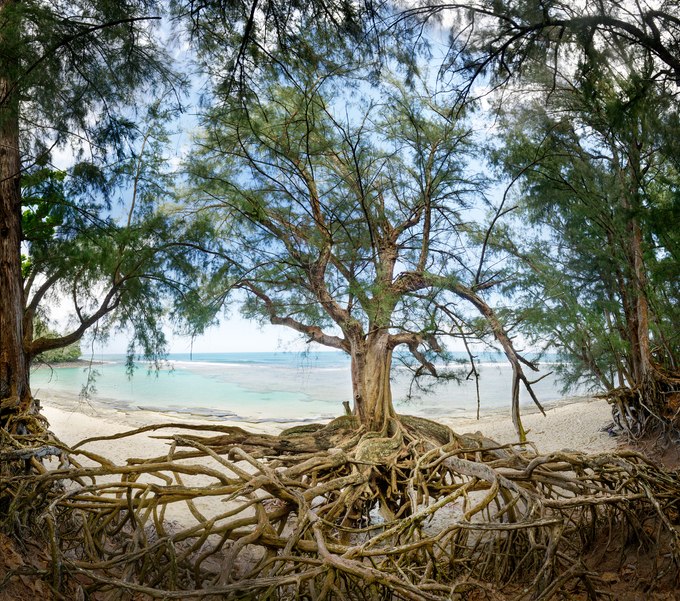At the end of the road along Kauai's north shore lies a beautiful and popular beach, surrounded by a wilderness of high mountains that meet the shore along a narrow fringe of sandy white beaches. From May to September, an offshore reef breaks the waves, protecting the foreshore's tranquil turquoise swimming pool of seawater. This beach becomes increasingly hazardous from October to April as the easterly trade winds shift to a northerly flow, bringing dangerous currents and high waves that overrun the reef and erode the beach.
Evidence of this erosion is the exposed roots of Casuarina trees on the beach terrace. As I approached the beach, this tree caught my attention as it almost seemed to hover in the air, its tethered roots anchored to the ground. Though they might appear indigenous to Kauai, the non-native Casuarina trees were planted in the 1870s as windbreaks. They thrive in the shoreline's saline soil, grow rapidly, and have a short lifespan. After planting, they invade an area, edging out other plants by emitting toxins that prevent them from taking root, leaving the ground bare beneath their thick canopies.
In addition to damaging winter storms, rising sea levels are expected to submerge 90% of the island's beaches by 2100. Kauaians are comprehensively addressing these threats and the growing impact of tourism on beaches. For example, they have closed Ke 'e Beach to vehicles and instead provide bus service as one step in implementing a series of island-wide measures to mitigate these effects on their population, nearly all of whom reside along the island’s vulnerable coastline.

